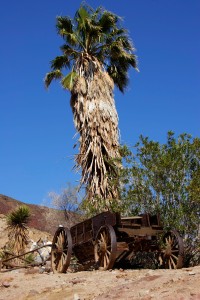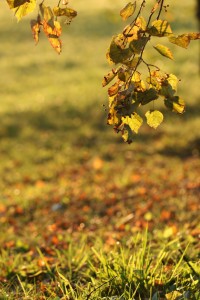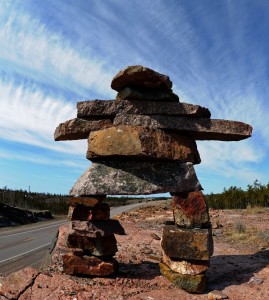If you’ve ever yearned to mine some buried treasure, you need to learn about the concept of dredging. It’s considered the most effective method of recreational prospecting and it’s gaining in popularity. Simply put, dredging involves using a suction dredge to vacuum gravel from the bottom of a creek bed. For the most part, a dredge is a sluice box which is affixed to a four-legged stand or positioned on floats. An engine pump is then either mounted on the floats with the sluice box or positioned on shore. Water at high pressure flows from the pump through a hose to a jet tube or power jet nozzle. Thanks to the principle of suction, you are then able to bring in gravel, rocks, and gold.
 You should know that dredges are not one-size-fits-all — there are a variety of sizes from which to choose. You can select anything from a one-and-a-half-inch backpack dredge that can be easily moved to a remote location, or choose a version as large as 12 inches. The size of the dredge is determined by the diameter of the suction hose–not the nozzle.
You should know that dredges are not one-size-fits-all — there are a variety of sizes from which to choose. You can select anything from a one-and-a-half-inch backpack dredge that can be easily moved to a remote location, or choose a version as large as 12 inches. The size of the dredge is determined by the diameter of the suction hose–not the nozzle.
The suction nozzle is usually fashioned from steel and is generally the diameter of the suction hose. The opening of the nozzle is ordinarily ratcheted down with a restriction ring so that the opening is decreased by about one-half inch. As a result, there’s less chance that a rock will plug the hose up farther up. To give you some idea of the size of dredges, a three-inch hose size with a nozzle opening of two-and-a-half inches can be used in an area with a maximum dredge size restriction of two-and-a-half inches.
As with other recreational prospecting equipment, you’ll find that dredges tend to vary in design. Gravel enters the sluice box either by means of a “Header Box” that slows the passage of water or by a “Jet Flare”, a long flaring tube that accomplishes the same feat. For many years, the Header Box has been the mechanism of choice, but the Jet Flare dredge is gaining in popularity because it offers more suction at the nozzle.
In some cases, as with smaller dredges, inner tubes are used as floats. In contrast, most dredges utilize plastic pontoons which can be collapsed when transported. For shallow water, dredges that are high banker-dredge combinations are used. These possess a four-legged frame which holds the sluice box. Larger dredges which are three inches or greater may have a breathing air pump positioned on the engine-pump to carry compressed air to the dredger, who can then go underwater to obtain gravel that is not otherwise accessible. This feature is significant because the bottom of a riverbed may be characterized by cracks in the bedrock that has gold trapped inside.
Prospectors consider dredges to be an efficient piece of machinery tailor-made to suit your needs. For beginners, experts recommend a two-and-a-half to three-inch dredge high banker combination. Such a rig is considered to be versatile and efficient and can be counted on to unearth a great deal of gold. But if you are already a seasoned prospector, experts suggest obtaining the largest dredge you can afford. Still, you must recognize the fact that you will have to operate under certain state laws. In Washington state, for instance, recreational prospecting is limited to four inches. Consult your local prospecting club for details about state size restrictions, and happy mining!
 The answer to that is a resounding “Absolutely Not!”
The answer to that is a resounding “Absolutely Not!”
 It wasn’t even a gold rush. It was a 12 year-old boy picking up a heavy hunk of yellow metal along Little Meadow Creek, in North Carolina. Conrad John Reed, the son of a British soldier who had deserted the cause of Britain, unwittingly started a chain of events that would have long reaching consequences for his family, his state and his country.
It wasn’t even a gold rush. It was a 12 year-old boy picking up a heavy hunk of yellow metal along Little Meadow Creek, in North Carolina. Conrad John Reed, the son of a British soldier who had deserted the cause of Britain, unwittingly started a chain of events that would have long reaching consequences for his family, his state and his country.
 In the century between 1870 and 1970, the United States recorded 104 mining disasters which took five or more lives, for a total of 1403 people killed. However, only 25% of those were gold mining accidents. Of those 27 disasters in gold mines, 12 involved fire, the main supports being timber, and crowded bunkhouses jammed together in tinder dry conditions. Another nine disasters were attributed to cage falls, and even snowslides. The remaining six disasters involved explosions, starting in 1889 with a dynamite blast in Silver Cliff, Colorado that took ten lives. Never was it truer that “haste makes waste”, as the rush to pry gold from its bed made men careless.
In the century between 1870 and 1970, the United States recorded 104 mining disasters which took five or more lives, for a total of 1403 people killed. However, only 25% of those were gold mining accidents. Of those 27 disasters in gold mines, 12 involved fire, the main supports being timber, and crowded bunkhouses jammed together in tinder dry conditions. Another nine disasters were attributed to cage falls, and even snowslides. The remaining six disasters involved explosions, starting in 1889 with a dynamite blast in Silver Cliff, Colorado that took ten lives. Never was it truer that “haste makes waste”, as the rush to pry gold from its bed made men careless. Before you grab a shovel and head out to the hills, it helps to understand some of the basics about what you’re looking for. Gold is a mineral, 58th on the table of 92 elements, in terms of abundance. Normally yellow in colour, it ranges through silvery-yellow and orange-red, due to impurities in it, such as copper. To find a purely gold nugget is extremely rare. You are more likely to find it in flakes, or as part of a vein of quartz rock, or part of a conglomeration of rock and other materials formed thousands of years ago.
Before you grab a shovel and head out to the hills, it helps to understand some of the basics about what you’re looking for. Gold is a mineral, 58th on the table of 92 elements, in terms of abundance. Normally yellow in colour, it ranges through silvery-yellow and orange-red, due to impurities in it, such as copper. To find a purely gold nugget is extremely rare. You are more likely to find it in flakes, or as part of a vein of quartz rock, or part of a conglomeration of rock and other materials formed thousands of years ago. The man who would indirectly be responsible for bringing the “elephant” to California in 1849, was a Swiss immigrant, John Sutter. Not far from the small port of San Francisco, he built his own fort, bought livestock by the thousands, and hired immigrants to work his ever-expanding enterprises. In January of 1848, this included a sawmill, located on the American River. The mill architect, James Marshall scuffed up some yellow rocks with his boot. Then some more. And more. Worried that they were what he suspected, Marshall hot-footed it for Sutter’s Fort, where he and Sutter tested the ore by the crudest of methods, and found it to be gold. Neither one of them was happy.
The man who would indirectly be responsible for bringing the “elephant” to California in 1849, was a Swiss immigrant, John Sutter. Not far from the small port of San Francisco, he built his own fort, bought livestock by the thousands, and hired immigrants to work his ever-expanding enterprises. In January of 1848, this included a sawmill, located on the American River. The mill architect, James Marshall scuffed up some yellow rocks with his boot. Then some more. And more. Worried that they were what he suspected, Marshall hot-footed it for Sutter’s Fort, where he and Sutter tested the ore by the crudest of methods, and found it to be gold. Neither one of them was happy.